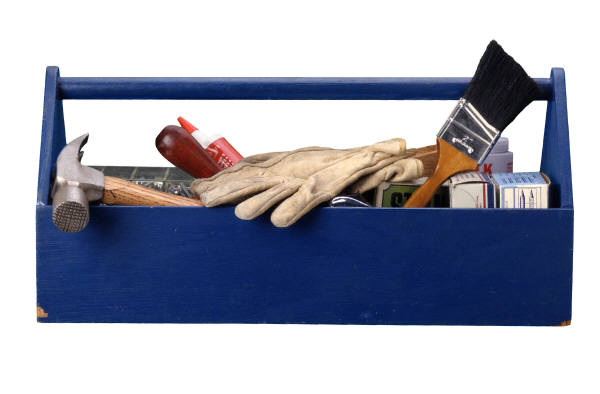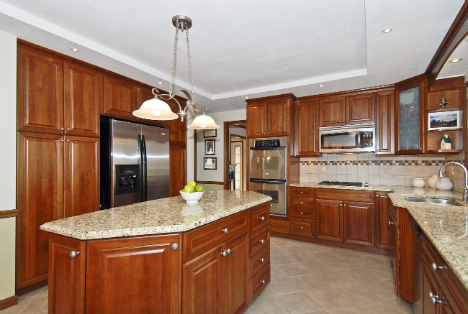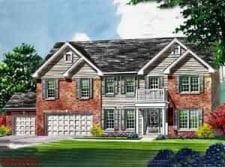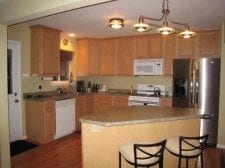Updated from original article published 7/07

If you had to guess what your home is worth, do you have a number in mind? I’m guessing you do.
Most homeowners have an idea of what they think their home is worth. The problem with their guesstimate is that they often base their home value on some inaccurate assumptions.
When it is time to sell, homeowners often make an assumption that they should get back every penny that they spent on their home. In order to talk about how home improvements affect a home’s resale value, we need to first talk about the different things that homeowners spend money on.
4 Types of Home Repairs and Improvements:
1. Routine Maintenance:
Routine maintenance covers things you do on a regular basis to keep your systems running properly. Just as you get your oil changed in your car every 3000 miles, you should be having your air conditioning and furnace serviced annually. A few of the other items you should be doing include cleaning your gutters, removing tree roots from your sewer lines and trimming your trees away from the roof line.
For a more detailed list of routine home maintenance items, take a look at this seasonal checklist.
Routine maintenance doesn’t add any value to your home, but hopefully will prevent your systems from wearing out before their time or causing problems such as leaky basements.
2. Repairs:
Even if you do routine maintenance, you will eventually have to repair or replace just about everything mechanical or exposed to the weather.
In the St. Louis area, most furnaces, air conditioners, hot water heaters and roofs last for about 15-20 years. If you purchase a 14 year old home, you probably have some big expenses looming. Of course, it is unlikely that everything will go out at the same time. I have a furnace that is 25 years old. It could break tomorrow or last another 5 years.
While a roof may have a 20 or 30 year warranty, it’s common for homeowners to replace a roof long before the warranty is up. We get hail storms every spring in the Midwest. My first home had a 5 year old roof when it was hit by hail and replaced through my insurance policy.
The bottom line is that unless you purchase a new home, you should plan to make some repairs each year. These repairs do not increase the value of your home since buyers assume that everything is working properly. After working with hundreds of buyers, I can assure you that very few of them were willing to pay more for a house because it had a new roof or furnace.
3. Cosmetic Updates:
 Cosmetic updates are the things that you do to your home to keep it appearing updated and fresh. Replacing 10 year old carpeting isn’t improving your home, it is simply taking away a blemish on your house that would devalue it compared to your neighbors.
Cosmetic updates are the things that you do to your home to keep it appearing updated and fresh. Replacing 10 year old carpeting isn’t improving your home, it is simply taking away a blemish on your house that would devalue it compared to your neighbors.
Every homeowner should plan on spending around 1-3% of the value of their home annually to make cosmetic updates and repairs.
 When buyers walk through a home for sale and see that it is one of the most expensive homes in the subdivision, they will expect the house to be in great condition.
When buyers walk through a home for sale and see that it is one of the most expensive homes in the subdivision, they will expect the house to be in great condition.
You can say your home is in great condition if:
-
All of the carpeting & flooring is clean (no stains!) and doesn’t show any wear.
-
None of the exterior paint should be peeling and all interior paint should be free from scuffs along the walls and trim.
-
The kitchen and bathrooms should be updated. If the cabinetry and fixtures in your house are not similar to what is popular in stores today, buyers will consider them dated and will expect a discount on the house.
If a homeowner chooses not to make the updates that are needed to keep a home appearing current and in good condition, buyers will expect to get the home for a discount!
4. Home Improvements:
A home improvement means that the homeowner added something to the home that it didn’t have before.
Improvements may include converting existing space into more useful space. One of the best values for reconfiguring current space is to add a bathroom in a home that doesn’t have a master bathroom or a bathroom on each floor.
Other home improvements include:
-
replacing older painted siding with maintenance free vinyl or cement fiberboard siding
-
converting a floor plan with small separate rooms into an open floor plan by removing walls
-
changing a small galley kitchen into a more functional space by enlarging it and improving the layout
-
adding living space in the unfinished basement
-
converting a carport to a garage
-
increasing the square footage of the home through an addition
You get the idea. If it wasn’t there before, you can consider it a home improvement instead of a repair or cosmetic update.
How Do Cosmetic Updates and Home Improvements Affect Resale Value?
I wish that I could tell you that you will get back all of your money that you spend updating and improving your home. Unfortunately, the statistics just don’t support this position.
The reality is that unless a home is completely outdated or has an obsolete floor plan AND is purchased at a substantial discount to reflect the condition, a homeowner can expect to only get back a portion of the money spent on cosmetic updates and home improvements when it is time to sell.
Remodeling Magazine’s annual Cost vs. Value Report takes a look at what percentage of the cost of home improvements you can expect to recoup through added value. According to the 2010-2011 study, the best mid-range projects to spend your money on in if you live in the West North Central region (including Missouri) are:
-
Entry door replacement (steel door) – 78.9%
-
Garage door replacement – 68.7%
-
Wood deck addition – 65.3%
-
Minor kitchen remodel – 65.2%
-
Siding replacement (vinyl installed) – 63.3%
-
Attic bedroom – 63.0%
-
Major kitchen remodel – 62.6%
-
Window replacement (vinyl) – 61.8%
-
Basement remodel – 60.5%
-
Window replacement (wood)- 60.0%
*** % listed is the cost recouped. To see the description and estimated cost of each project, click on the link for the Cost vs. Value Report. Information for St. Louis is also available via a download, but I am not permitted to reprint the city statistics.
All Cosmetic Updates and Home Improvements Don’t add Value!

One important factor to consider before you make any improvements is evaluating if the changes you are planning will appeal to the majority of buyers.
If you decide to improve your home by turning your backyard into an English garden, or replace your outdated kitchen counters with brand new BLUE counters, you may find that buyers will see your improvements as a negative that devalues your home.
If you want to discuss how the cosmetic updates or home improvements that you are planning will affect your home’s value, please contact us to discuss the current value of your home vs the value it would be worth with the updates.
Sometimes it is worth making the changes to your home, even if you won’t get the money back, because you will be happier in your home. I think that’s a valid reason for making the changes. But before you spend any money, you deserve to know the facts so you can make an informed decision.







